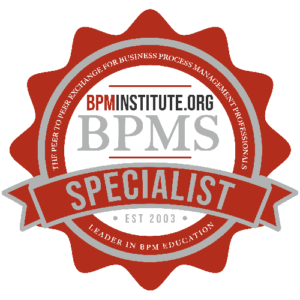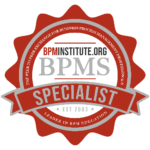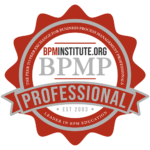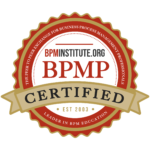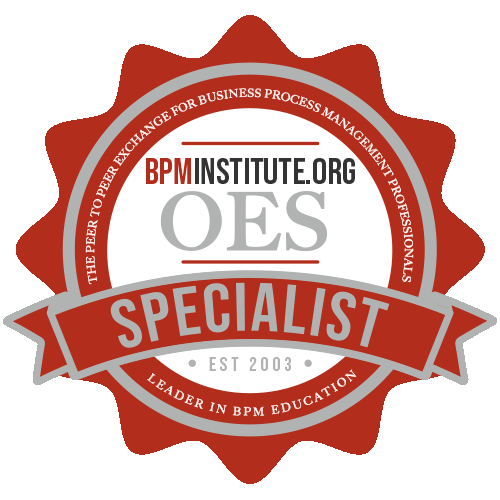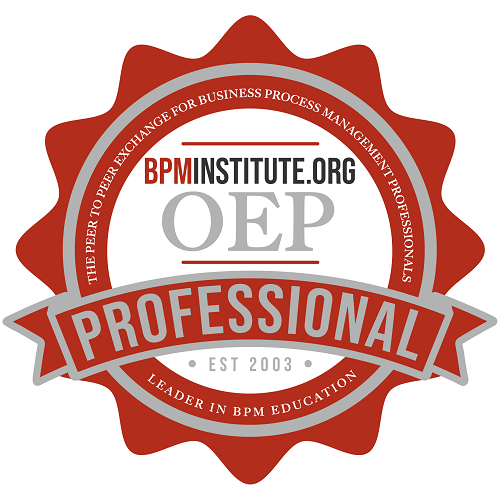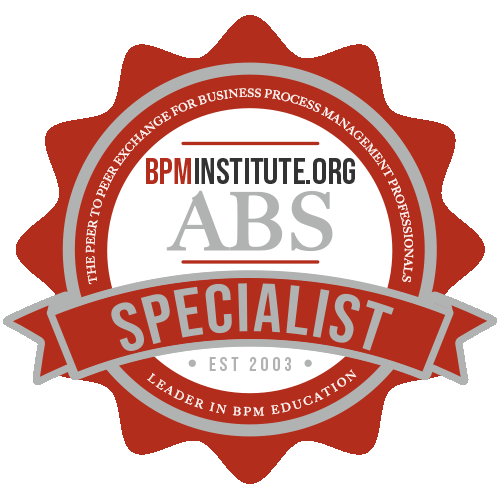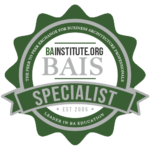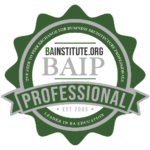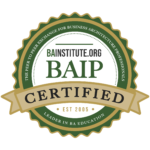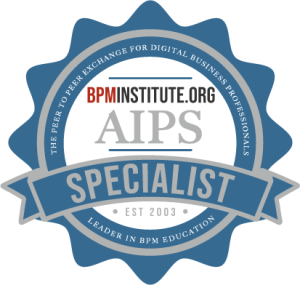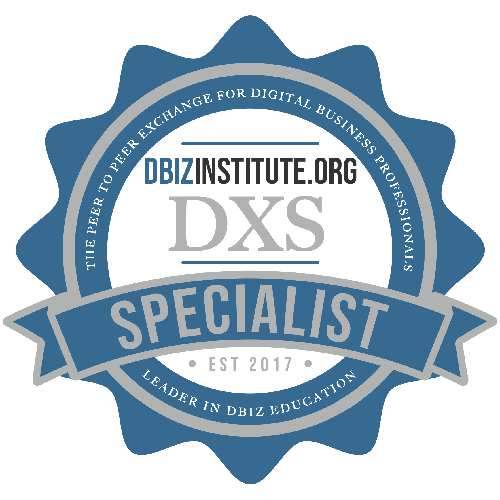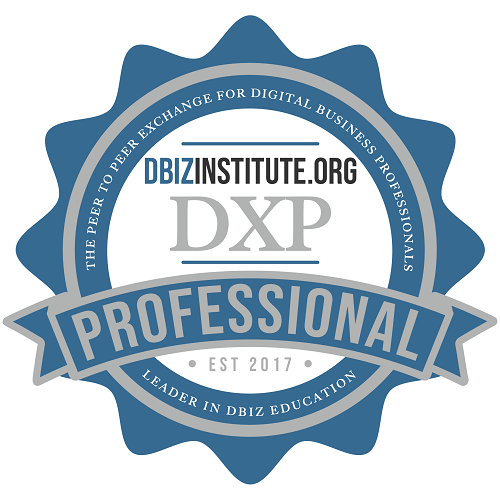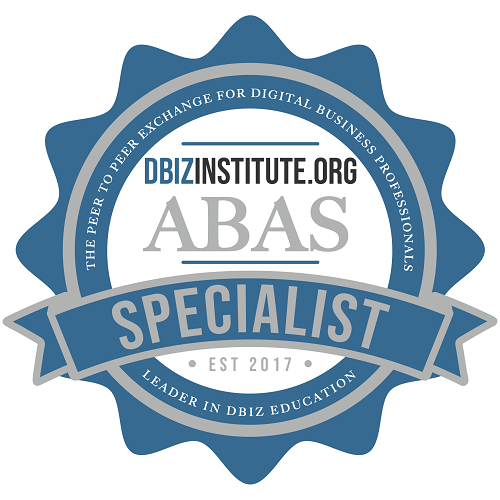Should we use flow charts, swim lanes, value stream mapping, proprietary software notation, or BPMN? Yes, there a number of notations you could use, and you want to pick the right one for your organization.
The first question to ask is what is the purpose of the process diagramming notation? Since there are several purposes for process diagramming at different stages of a BPM/ process improvement project, you may switch to one type of notation or another at different times.
Purpose 1: A high level map to scope the project and as part of the charter. Here I suggest using a simple flow chart with 6-10 steps using rectangle for activities/steps, diamond shaped decision diamonds and directional arrows. You could actually create it in PowerPoint, but I usually do it in Visio. The purpose of this map is to get people understanding what a process looks like.
A high level process map is:
- Not a bulleted list of the activities. You want to begin to switch to a process focus, so model the high level map by drawing a process. It gets everyone seeing it on the wall or screen, and shifts the conversation away from just one person talking.
- Not Chevrons. Chevrons are a popular way of showing concepts or stages at a high level. They serve that purpose well. I would not use them here, because you want the organization to begin to see what a process map is–the flow, a few standard symbols, and the directional arrows. The chevrons are a good way to represent a roadmap of what will be happening in the overall BPM effort; I used them to depict that.
- Not your creative symbols. If you use symbols that you like (some boxes, some parallelograms, arrows that go all over the place, some other stencil figures) you will have to explain the whole map, and you will be the only person who knows what the symbols mean. The high level map is a good time to introduce the basic notational symbols. If you want to do something creative, do a storyboard, but do not call it a high level map. The storyboard might better represent a story about today’s process and some of the challenges. I really do not recommend it here; in fact you would still need the high level map for the charter.
- Not a BPMN top level map because creating an accurate BPMN map could mean having a black box customer pool, message lanes, and multiple end state—which seems more complicated than needed at this stage. I suggest keeping the BPMN diagram until a bit later in the methodology, but if you prefer to use just the straightforward level one BPMN symbols it could work.(See “A variation” below.)
- Sometimes a value stream map. This map has many lean notational symbols and may be unfamiliar and overwhelming to the business side. If your organization has adopted Lean as a whole and many employees and managers have had training on the Lean tools then you would want to use a high level value stream map. I love the data on the value stream map, but use it at a later stage in the BPM methodology.
- A variation. I have had colleagues tell me they start using Business Process Modeling Notation (BPMN) as the process modeling standard right from the get-go. They use Level 1 or the basic BPMN symbols and keep the model simple with the same 6-10 tasks –often one internal pool, no swim lanes, one start event and one end event, activities, gateways, and sequence flows. Often they are using a proprietary BPMN modeling tool that they are selling as well. I prefer to start with BPMN in the next phase, as described in Purpose 2.
Purpose 2: Transition to BPMN at the Top Level
After the high level map is completed (which is part of the charter—another critical element to get a BPM project off to the right start), I suggest taking the high level map and use BPMN to develop a top level model. There are many similarities to the high level map you have already done, but three critical differences:
- Now the model uses BPMN, the standard notation that allows the process model to be shared across tools, departments and between business and IT.
- The top level BPMN model is the hierarchical parent for the process and will become more detailed with child sub-processes and even more detailed “grandchildren” sub-processes under the first level of sub-process.
- The top level BPMN model will elucidate the critical exception end states, so whereas the high level will only have the happy path end state, the top level BPMN will show critical end states, differentiating how the process ends under specific conditions.
Purpose 3: Detailed As Is Process Diagrams. Here you want to model process diagrams that show actors and the tasks they perform or are automated in their area of responsibility.
Now I suggest using a combination of methods:
- Draft of an instance with swim lane process displayed using ‘stickies’ on a large piece of butcher (9 feet by 4 feet)
- BPMN captured by a notation expert at the same time on a laptop.
I like the butcher paper because it engages the full BPM team the best. The facilitator runs the session and captures one instance of process. Capturing one instance of a real completed process makes it easy to document the model in 90 minutes or less, and it won’t have the spaghetti diagram like a process model showing all the exceptions. It will show what happened in that one instance.
More instances? Yes, you may need to model some other instances beyond the original one. You need to capture instances that include each of the exception end states. You also may want to capture additional instances for different levels of complexity, different customer groups, or variations in process at different locations. Carefully decide which additional instances are useful. Don’t make this an exercise in creating multiple models. Often after doing a few models the team begins to see what sections of the process are consistent and sections where they are not. I then create a consolidated model and use that for analysis. The consolidated model can be the first step in standardizing the process.
Creating the As Is Instance using stickies on the butcher paper is a light touch way of documenting a current state model. The team has fun, gets the model done, and identifies issues, data, and improvement ideas quickly. I set it up with the black box customer lane at the top, and the internal pool underneath. It is very easy to make changes – just throw out and rewrite the stickies.
I find the best approach is to have a BPMN recorder simultaneously capture the process model on his/her laptop. That way the BPMN model is done real time and there is no time delay. This method avoids a few of the problems with going straight to the laptop, such as
- The person recording on the laptop cannot facilitate at the same time
- Team members get focused on the BPMN symbols and the laptop rather than articulating the process
- The lap top model can be projected on a screen but often the symbols get small and it is hard to show all the steps on one screen.
Now there are a few things to finish up these BPMN models.
- Make sure the swim lane has message flows that match the top level BPMN model. (You will have to go back and review these and adjust after completing the instance.)
- Make sure the end states are properly represented.
- Go back and fill in the other sides of each gateway. They will not represent the one instance but are needed to complete an accurate BPMN diagram.
- Consolidate multiple instances into one BPMN as is process model to represent the totality.
Modeling in BPMN provides a standard that can be communicated and shared. It uses an explicit language and method. I can’t tell you how often clients tell me. “ We have already modeled our current state processes.” I always say, “Great. We will build off that work.” Later when I look at these models, I often don’t understand them. The person who documented them used flow chart symbols and other symbols in a ‘creative’ way and only s/he can read the model.
So create As Is models flowing the process on the wall and capture it in BPMN simultaneously. Then go back and review the BPMN process diagram with the team. The team will soon be able to read the BPMN diagram easily but they may not have been able to build it initially. And the BPMN process model conveys the logic of the process unambiguously from the diagram. That means its executable as well.
As Is process models represent how the process is currently performed. They are the baseline model, just like baseline metrics. You need to know where the process is today, but don’t worry about getting the diagram perfect. The current state diagram is used for analysis. You will learn what is working, identify the current problems, see who does what, find out how many hand offs there are, and identify the many layers of approval. The current state map is the first technique for analysis.




